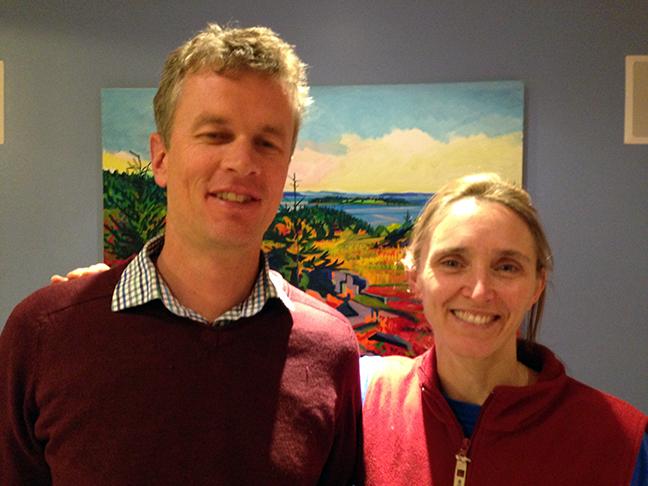Friends Welcomes Visitor from Tasmanian Friends School
Weekly Update
February 6, 2017
Did you know that 10,262 miles away, in Hobart, Tasmania, there is a Friends school just like ours? Hobart Friends is a K-12, independent, co-educational, Quaker, day and boarding school. It was founded in 1887 with the goal of teaching and practicing the core Quaker values. This is also stated on the school’s website at friends.tas.edu.au:
“The School thrives on an intrinsic spirit of warmth and friendliness, and its strong community atmosphere reflects the intentions of the founding Quakers whose original vision for the School in 1887 was education for spiritual and intellectual growth.
Friends’ is proud of its academic results, varied curriculum and co-curricular opportunities, but it is prouder of its students.
Students’ individual needs are the priority at Friends’ and we believe this focus is one of the main reasons that Friends’ students consistently achieve excellent academic results.
Each student’s individual interests are nurtured at Friends’, where the Quaker values it was founded on still apply today, particularly the recognition of ‘that of God’ in everyone, the desirability of simplicity, and the intention to establish peace and justice.
The Friends’ School has a commitment to service, to equity of relationships, and to fostering independent and creative thinking.”
This January we were fortunate enough to welcome Jeremy as a visitor, a math teacher from their school. He was also kind enough to present a Lunch and Learn, sharing some of Tasmania’s culture and wildlife, aspects of their school, and how we compare. Hobart Friends’ School and Wilmington Friends also have an exchange program in the making, planned to start around 2018.
Tasmania is geographically located at the bottom of the world. It was discovered by the Dutch around 1644 though Australia’s natives had been living there since 20,000 years prior. In the 1880s, Australians created a petition to form their own school. They got a certain amount of pounds — around 400 — and built the school. Hobart was the first school in Australia to offer education for girls and boys from kindergarten all the way to graduation. With 1300 students from from K-12, they are the biggest Quaker school in the world. The International Baccalaureate program is also offered to the Hobart Friends’ School students.
In Australia, all schools get government funding. In order to qualify for the funding, the school is required to fly the Australian flag. In comparison with the United States, Australia is a very Nationalistic country — you wouldn’t see the Australian flag in front of houses or on cars like you would see quite often here. Hobart had an issue flying the Australian flag in front of their school for that reason. So instead of flying just the flag in the front of their school, Hobart actually flies nine flags — some include the aboriginal flag and flags from all of their sister school from around the world.
The Lunch and Learn also provided the audience with some background of Tasmania such as its wildlife, geography, and racial makeup. Tasmania is around the size of West Virginia with a population of half a million — which is actually quite small. One third of their state is actually a national park: meaning that one can drive around, hike, and bike in it, but one cannot live there. Hobart specifically sits on a river surrounded by mountains. In terms of wildlife, Tasmania actually does not have kangaroos naturally. They do have wallabies, echidna (porcupine-like anteaters), wombats, tasmanian devils — though they are now catalogued as an endangered species.
Diversity was a question asked at the end of the Lunch and Learn. Hobart Friends’ School has started to get some of the aboriginal students from reservations. Aboriginals in Tasmania faced near genocide when the white man severing the land decided that aboriginals were killing a lot of the livestock. Despite this tragedy, many survived and flourish today, contributing to the diverse racial makeup of Australia.
The final questions of the Lunch and Learn had to do with language and sports and Hobart. French, German, Chinese, and Japanese are the languages offered. In year 7, students actually are required to take all four languages and choose just one to study in year 8. The most popular sports in Australia include soccer, field hockey, swimming, water polo, and rowing.
Jeremy opened our eyes to the culture of his home and the culture of a Quaker school which complements our own. The Friends Community looks forward to furthering our relationship to the school with the exchange program to be implemented in 2018!































